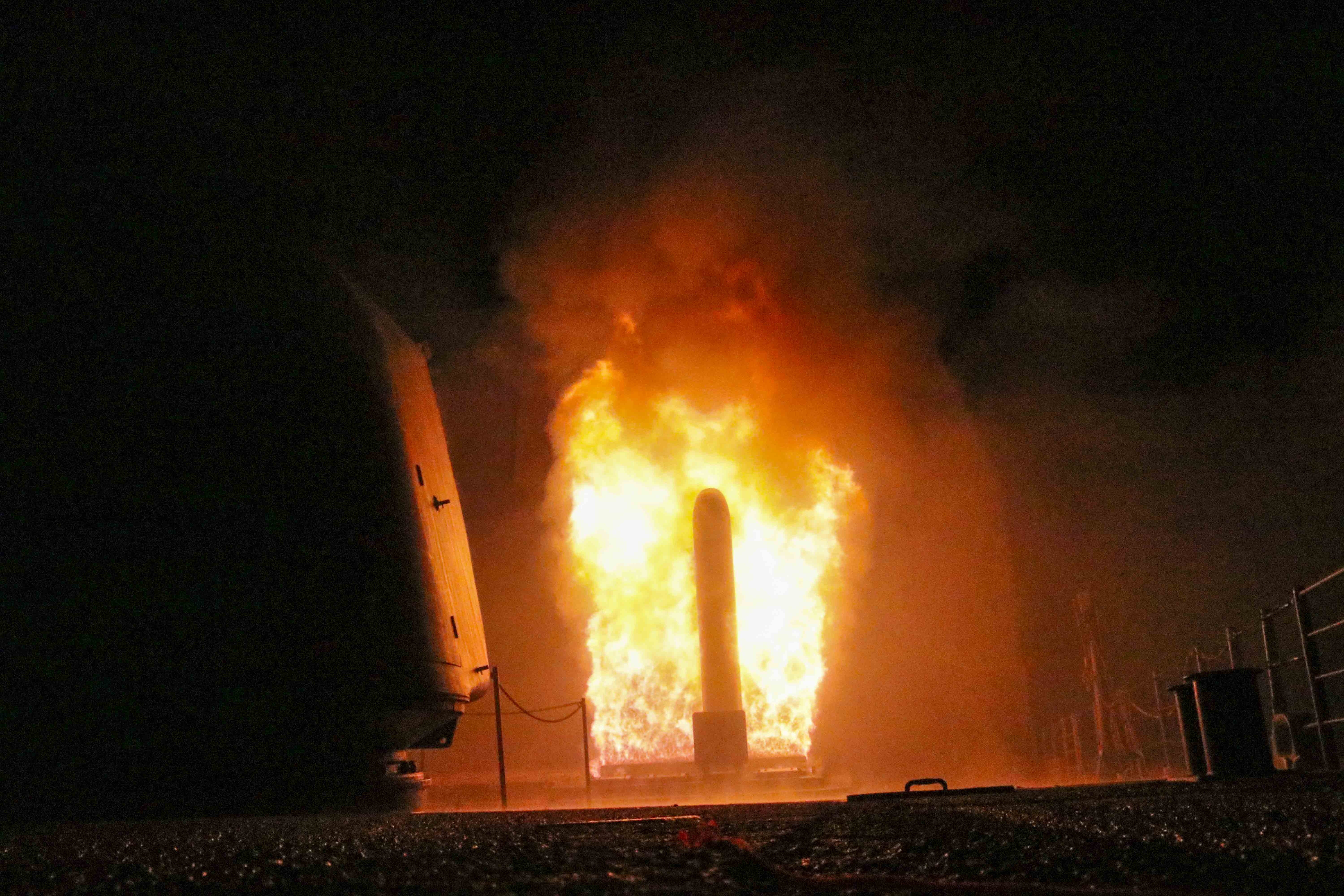
The Japanese government is considering buying Tomahawk long-range cruise missiles from the United States to establish a “counterstrike” capability to deter enemy missile attacks, according to domestic press reports.
The Japanese Self-Defense Forces could deploy Tomahawks faster than its own domestically produced long-range cruise missiles, according to public broadcaster NHK.
The Japanese Ministry of Defense is currently in the process of extending the range of the domestically made Type 12 surface-to-ship missiles deployed by the Ground Self-Defense Force, from the current 125 miles to a maximum range of 750 miles. However, the enhanced Type 12 SSM will not be ready until 2026 — too late to respond to the expanded threats from China and North Korea. The MoD is considering deploying Tomahawks from the land, sea and air as well as considering submarines as a launch platform, according to the Japanese newspaper Yomiuri Shimbun.
At present, it is unclear which variant of the Tomahawk cruise missile the Japanese government may introduce: Block IV, which is currently in operation by the U.S. Navy and others, or the Block V, which was delivered in 2021.
Although the Type 12 SSM will have its range extended, its original purpose is to attack ships. The introduction of the Tomahawk, a mainly land-attack cruise missile, would allow Japanese forces to attack enemy bases and other targets overseas, which could be controversial given Japan’s self-defense military policies. The Japanese government is currently planning to revise its National Security Strategy, National Defense Program Guidelines and Mid-Term Defense Program by the end of 2022. The introduction of long-range cruise missiles, including Tomahawk, is expected to be specifically described in these documents.
Buying Tomahawks is linked to the cancellation of Japan’s domestic Aegis Ashore BMD program in 2020. Originally, Japan’s stance was to respond to the threat of ballistic missiles from North Korea with its own domestic ballistic missile defense interceptors. The cancelation of the program pushed Japan to look to other means of deterrence.
However, then-Prime Minister Shinzo Abe questioned the interception model during a press conference on Aug. 28, 2020.
“We will examine whether we can truly protect the lives of the people only by improving interception capabilities,” Abe said.
This statement is believed to indicate his willingness to pursue the possession of some kind of offensive capability. In response to the significant progress in the technological level of North Korea’s ballistic missile development, the Japanese government has been studying ways to enhance deterrence. The Tomahawk would give the Japanese government a counterstrike capability against enemy missile attacks.
“In order to protect the lives and livelihood of our citizens, we will examine all options, including a so-called enemy base strike capability, in a realistic manner without ruling out any options,” Prime Minister Fumio Kishida told the Diet on Dec. 6.
“We will fundamentally strengthen our defense capabilities with an accelerated pace.”
Tomahawk Block IV has a longer range than its predecessors (well in excess of 1,000 miles), can be directed at a new target in mid-flight, and can also beam back images of the battlefield to its launch platform. The Royal Navy is the only foreign user of the missile to date.
According to Raytheon, U.S. and allied militaries have flight-tested the GPS-enabled Tomahawk 550 times and used it in combat more than 2,300 times. Its most recent use came in 2018, when U.S. Navy warships and submarines launched 66 Tomahawk missiles at Syrian chemical weapon facilities.
All Tomahawk Block IVs are being upgraded to Block V with longer range and dynamic targeting with the capability to hit vessels at sea (maritime strike role). Raytheon is recertifying and modernizing the missile, extending its service life by 15 years.
A version of this post originally appeared on Naval News. It’s been republished here with permission.





